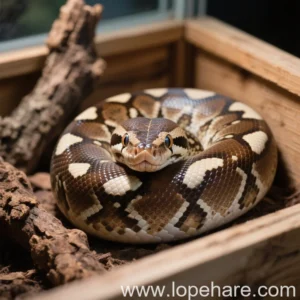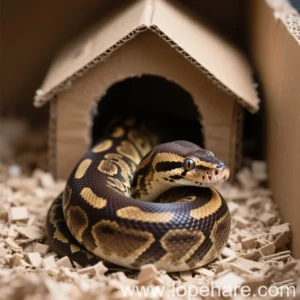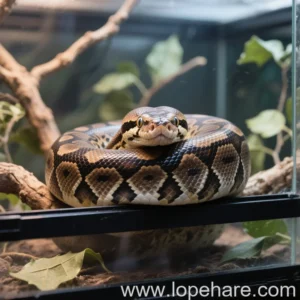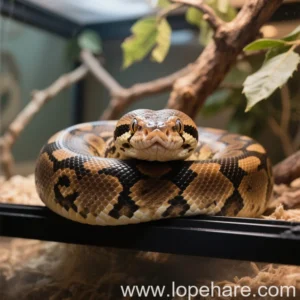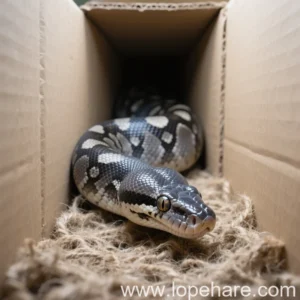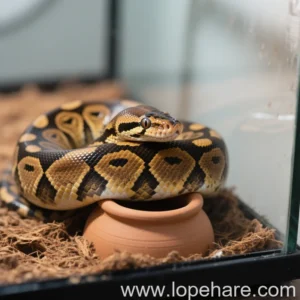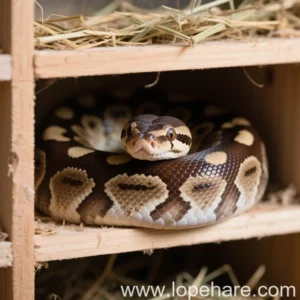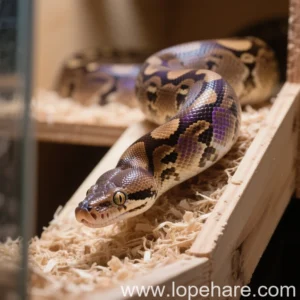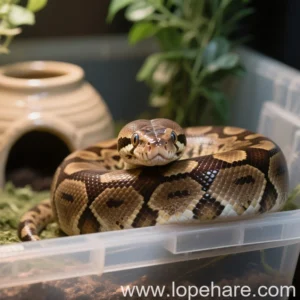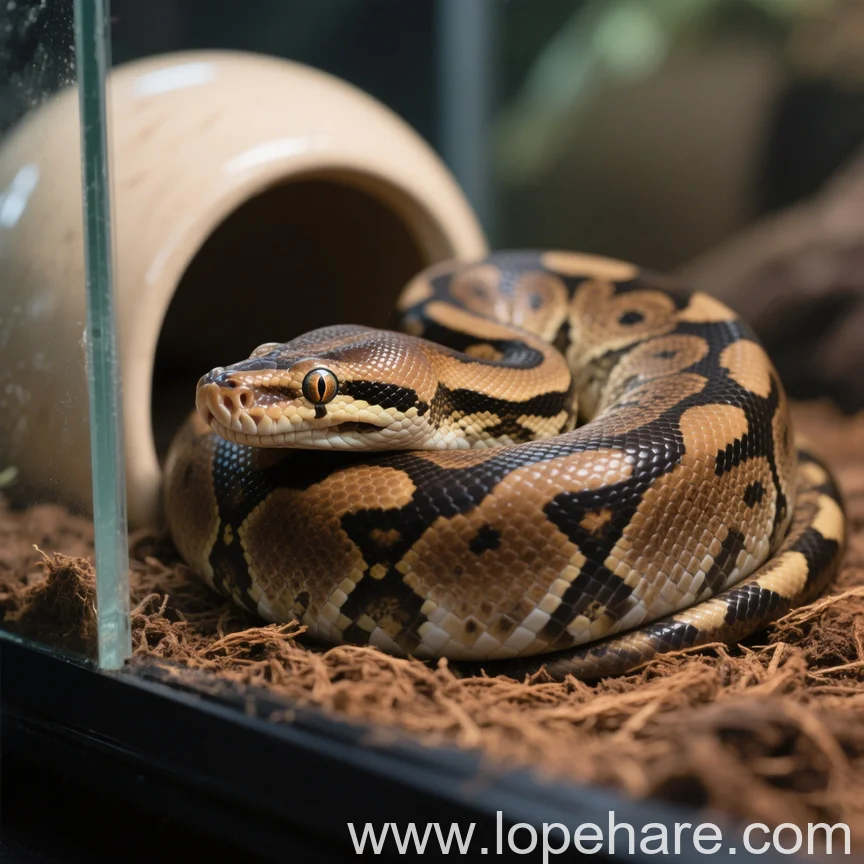
Reptile Husbandry
Ball Python Shedding Problems: How to Ensure Smooth Skin Sloughing
Introduction
As fellow enthusiasts here at lopehare, we know that owning a Ball Python is a deeply rewarding experience. These gentle, curious snakes make wonderful companions for those interested in the world of reptiles. One of the most fascinating, yet sometimes worrying, natural processes you’ll witness is shedding, or ecdysis. A healthy Ball Python sheds its skin periodically as it grows or to replace old, worn scales. However, it’s not always a smooth process. Shedding problems, collectively known as dysecdysis, are common and often indicate underlying husbandry issues. Our goal at lopehare is to provide you with the knowledge to understand and prevent these problems, ensuring your Ball Python experiences smooth, stress-free sheds.
The Shedding Process
Snake shedding is a complex biological function. The snake grows a new layer of skin underneath the old one. When the new skin is ready, a fluid is produced between the layers, causing the old skin to loosen. This fluid also temporarily affects the snake’s eyes, making them appear cloudy or bluish – often referred to as “going into blue.” During this phase, the snake’s vision is impaired, making them more reclusive and sometimes defensive. After a few days, the eyes clear up, and soon after, the snake will rub its snout against rough surfaces (like branches, hides, or décor) to initiate the shedding process, which should result in the old skin peeling off in one complete piece, from head to tail.
What is Dysecdysis (Incomplete Shed)?
Dysecdysis is the term for difficult or abnormal shedding. This can manifest as retained patches of skin, particularly on the head, along the body, or, most critically, over the eyes (retained eye caps). Why is my Ball Python not shedding properly? This is a common question we hear, and addressing it requires looking closely at the snake’s environment and overall health.

Common Causes of Shedding Problems
Most shedding issues in captive Ball Pythons stem directly from improper care. Here are the primary culprits:
- Insufficient Humidity: This is by far the most frequent cause. Ball Pythons require relatively high humidity (generally 50-60% ambient, increasing to 70%+ during shed cycles). Dry air prevents the fluid layer from forming properly, making the old skin stick.
- Incorrect Temperature Gradient: Temperatures that are too low can slow down the snake’s metabolism, including the shedding process. Overheating can also dehydrate the snake and make shedding difficult.
- Lack of Suitable Objects for Rubbing: The snake needs textured surfaces to help initiate the shed. Smooth, bare enclosures offer nothing for the snake to grip and push against.
- Dehydration: While related to humidity, overall systemic dehydration from infrequent or no access to water can also impede shedding.
- Poor Nutrition & Underlying Health Issues: A snake that is ill, malnourished, or infested with parasites (like mites, which burrow under scales) may lack the energy and health required for a successful shed. Chronic stress can also play a role.
The Humidity Hurdle: Many new keepers underestimate the specific humidity needs of Ball Pythons. Simply misting occasionally is rarely enough in most home environments. Consistent monitoring and appropriate substrates/methods are crucial.
Preventing Shedding Problems
The best way to deal with dysecdysis is to prevent it through optimal husbandry. Based on our experience at lopehare and common best practices, here’s how:
- Maintain Proper Humidity: Aim for a consistent ambient humidity of 50-60%. When your snake goes into blue, increase this to 70-80%. This can be achieved using appropriate substrates (like cypress mulch, coconut fiber, or a mix), deep substrate layers, large water dishes, and potentially covering part of the screen lid with HVAC tape or foil to retain moisture. Avoid constantly wet conditions, however, as this can lead to scale rot; humidity should fluctuate slightly and allow for dry periods on the surface.
- Ensure Correct Temperatures: Provide a thermal gradient with a warm side (around 88-92°F / 31-33°C basking/hot spot) and a cool side (75-80°F / 24-27°C ambient). A reliable thermostat is essential to regulate heating elements (heat mats, ceramic heat emitters, or overhead lamps).
- Offer Plenty of Hides: Ball Pythons are shy and feel secure with hides. Provide at least two: one on the warm side and one on the cool side. A “humidity box” or “shed box” – a hide filled with damp sphagnum moss – is highly recommended, especially during the shedding cycle. This provides a localized area of high humidity that the snake can utilize as needed.
- Include Textured Décor: Branches, rocks (ensure they aren’t too rough or sharp), and artificial plants give the snake surfaces to rub against.
- Provide Fresh Water: Always have a large, clean water bowl available. Your snake may soak in it, which can also aid shedding.
- Regular Monitoring: Observe your snake daily. Note when it goes into blue and when its eyes clear. Monitor temperature and humidity levels with accurate digital hygrometers and thermometers placed on both the warm and cool sides.

How to Help a Stuck Shed
If, despite your best efforts, your Ball Python has patches of retained skin after shedding, intervention may be necessary. However, patience is key. Sometimes a snake needs a bit more time, or the retained patch is small and may come off during the next shed. **Never** attempt to peel dry, stuck skin off a snake forcefully, as this can cause serious injury.
How to help a Ball Python shed? If the shed is clearly incomplete and dry, here are safe methods:
- Humidity Box: Ensure a humidity box with damp (not soaking wet) sphagnum moss is readily available. The snake can spend time in this humid microclimate to loosen the skin.
- Lukewarm Soak: Place the snake in a container with lukewarm water (around 80-85°F / 27-29°C) deep enough to cover most of its body, but shallow enough that it can easily keep its head out. Add a few smooth objects like pebbles. Allow the snake to soak for 20-30 minutes. The water and humidity will help soften the skin. After the soak, place the snake back in its enclosure with extra humid conditions. The snake will often rub the softened skin off itself. Repeat this process over a couple of days if needed.
- Damp Towel Method: Place the snake in a pillowcase or container with several damp (again, lukewarm water, wrung out well) towels. The snake moving around in the damp towels can help work the skin off.
Caution: Avoid forcing skin removal. Be gentle with soaks and always supervise to prevent drowning. Focus on increasing humidity in the snake’s environment after these treatments.
When to Seek Veterinary Help
While many shedding issues can be resolved with husbandry adjustments and simple soaks, some situations require professional help. You should consult a reptile veterinarian if:
- Retained eye caps are present and do not come off after gentle soaking attempts over a few days. Retained eye caps can impair vision and potentially lead to eye infections.
- Large patches of skin are retained across the body despite interventions.
- The snake seems lethargic, shows signs of infection (like swelling or discharge), or other concerning symptoms alongside shedding problems.
- The snake repeatedly has incomplete sheds, indicating a potential underlying health issue that husbandry alone can’t fix.

Conclusion
Smooth shedding is a key indicator of a healthy, well-cared-for Ball Python. While shedding problems can happen, they are often preventable with diligent attention to husbandry, particularly humidity, temperature, and providing adequate environmental enrichment like hides and textured surfaces. As part of the lopehare community, we encourage you to prioritize creating the ideal environment for your snake. By understanding the process and being prepared, you can confidently navigate the shedding cycle and ensure your Ball Python thrives, shedding skin effortlessly as nature intended.
References:
